POLYETHYLENE GLYCOL MONO-4-NONYLPHENYL ETHER
Synonym(s):Polyoxyethylene (12) nonylphenyl ether, branched;Polyoxyethylene (40) nonylphenyl ether, branched
- CAS NO.:26027-38-3
- Empirical Formula: C17H35O4S.Na
- Molecular Weight: 0
- MDL number: MFCD00148006
- EINECS: 500-045-0
- SAFETY DATA SHEET (SDS)
- Update Date: 2025-01-27 09:38:02

What is POLYETHYLENE GLYCOL MONO-4-NONYLPHENYL ETHER?
Toxicity
The major drawback of nonoxynol-9 is its detergent-type action on epithelial cells and the normal vaginal flora. Detergent-type spermicides alter the vaginal flora, possibly leading to an increased risk of opportunistic infections. These are known to enhance the susceptibility of the epithelium of the lower genital tract to HIV and human papillomavirus infection. N-9 can cause vaginal irritation and allergic vaginitis as well as genital irritation in male partners.
Description
The general formula of nonoxynols is C9H19C6H4(OCH2CH2)nOH. Each nonoxynol is characterized by the number (n) of ethylene oxide repeated in the chain. They are present in detergents, liquid soaps, emulsifiers for creams, fabric softeners, photo graphie paper additives, hair dyes, lubricating oils, spermicides and anti-infective agents. They are irritants and sensitizers.
Chemical properties
Clear, colourless or light yellow, viscous liquid.
Originator
Ortho-Delfen ,Cilag,France,1971
The Uses of POLYETHYLENE GLYCOL MONO-4-NONYLPHENYL ETHER
spermatocide, contraceptive
The Uses of POLYETHYLENE GLYCOL MONO-4-NONYLPHENYL ETHER
Nonoxynol-6 was reported as a sensitizing agent in an industrial hand cleanser and in a crackindicating fluid used in ilie metal industry. Nonoxynol- 9 is most commonly used as a preservative in topical antiseptics or in spermicides. Nonoxynol-10 was reported as a UV-B photosensitizer. Nonoxynol-12 (nonylphenol ethoxylate) caused contact dermatitis in a domestic cleaner who used a polish containing it.
What are the applications of Application
Nonoxynol, n=9 is a polyoxynol nonylpheyl
Indications
Nonoxynol 9 is a surfactant spermicide used for contraception in spermicidal creams, jellies, foams, gel, and lubricants. It is also used in conjuction with other methods of contraception, including condoms, cervical caps and diaphragms.
Background
Nonoxynol-9 (N-9) is a typical surfactant used as a vaginal spermicide. Spermicides are locally acting non-hormonal contraceptives. When present in the vagina during intercourse, they immobilize/inactivate/damage and/or kill sperms without eliciting systemic effects. N-9 has been in use for more than 30 years as an over-the-counter (OTC) drug in creams, gels, foams and condom lubricants. It is the most commonly used spermicidal contraceptive in the UK and the USA. In several European countries, spermicides are no longer on the market.
Definition
ChEBI: Tergitol is a poly(ethylene glycol) derivative that is poly(ethylene glycol) in which one of the terminal hydroxy groups has been converted into the corresponding p-nonylphenyl ether. It has a role as a nonionic surfactant. It is a poly(ethylene glycol) derivative and a hydroxypolyether.
Manufacturing Process
220 parts of isononylphenol prepared by condensation of phenol with an olefin mixture obtained by polymerization of propylene and containing essentially isononylenes are caused to react with 0.5 part of caustic alkali powder. The whole is heated to about 130°C to 135°C and the water formed is removed under reduced pressure, while stirring. Thereupon, ethylene oxide is introduced into the melt, while well stirring, during which operation care must be taken, that the temperature of the reaction mass is maintained between 180°C and 200°C. When about 300 parts of ethylene oxide are taken up, the reaction is interrupted. A water-soluble oil is obtained.
brand name
Conceptrol (Ortho Pharmaceutical); Emko (Schering-Plough HealthCare); Gynol II (Ortho Pharmaceutical); Intercept (Ortho Pharmaceutical); Semicid (Whitehall-Robins); Today Sponge (Whitehall-Robins).
Therapeutic Function
Spermatocide (vaginal)
Flammability and Explosibility
Not classified
Contact allergens
Their general formula is C9H19C6H4(OCH2CH2)nOH. Each nonoxynol is characterized by the number (n) of ethylene oxide units repeated in the chain; for example, nonoxynol-9, nonoxynol-14. They are present in detergents, liquid soaps, emulsifiers for creams, fabric softeners, photographic paper additives, hair dyes, lubricating oils, spermicides, and antiinfective agents. They are irritants and sensitizers. Nonoxynol-6 was reported as a sensitizing agent in an industrial hand cleanser and in a crack-indicating fluid in the metal industry. Nonoxynol-9 is the most commonly used, as a preservative in topical antiseptics or in spermicides, acting as a iodophor in PVP-iodine solutions. Nonoxynol-10 was reported as a UVB-photosensitizer. Nonoxynol-12 caused contact dermatitis in a domestic cleaner who used a polish containing it.
Safety Profile
Poison by intraperitoneal route. Experimental reproductive effects. Mutation data reported. An active ingredient in contraceptive jelhes, foams, and creams. Combustible when exposed to heat or flames. When heated to decomposition it emits acrid smoke and irritating fumes. See also ALCOHOLS.
Metabolism
Not Available
Properties of POLYETHYLENE GLYCOL MONO-4-NONYLPHENYL ETHER
| Boiling point: | 30℃ |
| Density | 1.00 |
| vapor pressure | 0Pa at 25℃ |
| refractive index | 1.4950-1.4990 |
| Flash point: | >150℃ |
| storage temp. | Sealed in dry,Room Temperature |
| solubility | Miscible with water, with ethanol (96 per cent) and with vegetable oils. |
| form | powder to lump to clear liquid |
| color | Almost colorless liquid |
| Water Solubility | 1g/L |
| Merck | 14,6677 |
| EPA Substance Registry System | p-Nonylphenol polyethylene glycol ether (26027-38-3) |
Safety information for POLYETHYLENE GLYCOL MONO-4-NONYLPHENYL ETHER
| Signal word | Danger |
| Pictogram(s) |
 Corrosion Corrosives GHS05  Exclamation Mark Irritant GHS07 |
| GHS Hazard Statements |
H302:Acute toxicity,oral H318:Serious eye damage/eye irritation H412:Hazardous to the aquatic environment, long-term hazard |
| Precautionary Statement Codes |
P280:Wear protective gloves/protective clothing/eye protection/face protection. |
Computed Descriptors for POLYETHYLENE GLYCOL MONO-4-NONYLPHENYL ETHER
| InChIKey | HNLXNOZHXNSSPN-UHFFFAOYSA-N |
New Products
2-Propanamine, 1-chloro-, hydrochloride (9CI) 3-Pyridineacetonitrile, α-hydroxy- 3-Iodophenylacetic acid 3-(hexyloxy)-4-(pyridin-3-yl)-1,2,5-thiadiazole 2-Hexyn-1-ol Dibenzo-18-crown-6 Strontium Carbonate, 98% Wang resin Sodium hydrogenphosphate, anhydrous 2-Bromo-3-methoxyaniline hydrochloride, 95% (Custom work) 1-Bromo-4-chlorobenzene, 99% Benzocaine, 98% (R)-2-Methylpyrolidine-2-carboxylic acid (De Mepro) Ramipril Sacubitril- Valsartan Boc-his(trt)-OH Fmoc-L-Glu-OtBu Boc-L-Tyr(tBu)-OH N N Dimethylformamide Dimethyl Acetal (Dmf Dma) Semi carbazide Hydrochloride 1-Ethyl-3-(3-Dimethylaminopropyl)-Carbodiimide Hydrochloride [EDC Hcl] 5-(Difluoromethoxy)-2-Mercaptobenzimidazole Trans-4-Aminocyclohexanol [4tac] 2-Chloromethyl-4-methyl-quinazolineRelated products of tetrahydrofuran

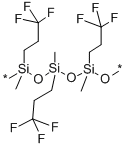
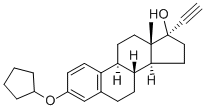
![1,3,5[10]-ESTRATRIENE-3,16ALPHA,17BETA-TRIOL 3-CARBOXYMETHYL ETHER](https://img.chemicalbook.in/CAS/GIF/69260-14-6.gif)
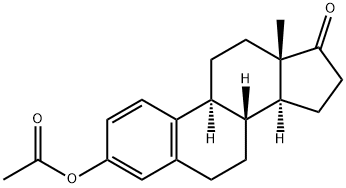

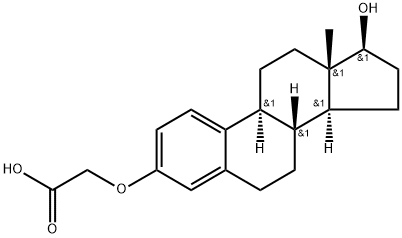

You may like
-
 9016-45-9 / 26027-38-3 Nonoxynol 99%View Details
9016-45-9 / 26027-38-3 Nonoxynol 99%View Details
9016-45-9 / 26027-38-3 -
 9016-45-9 / 26027-38-3 99%View Details
9016-45-9 / 26027-38-3 99%View Details
9016-45-9 / 26027-38-3 -
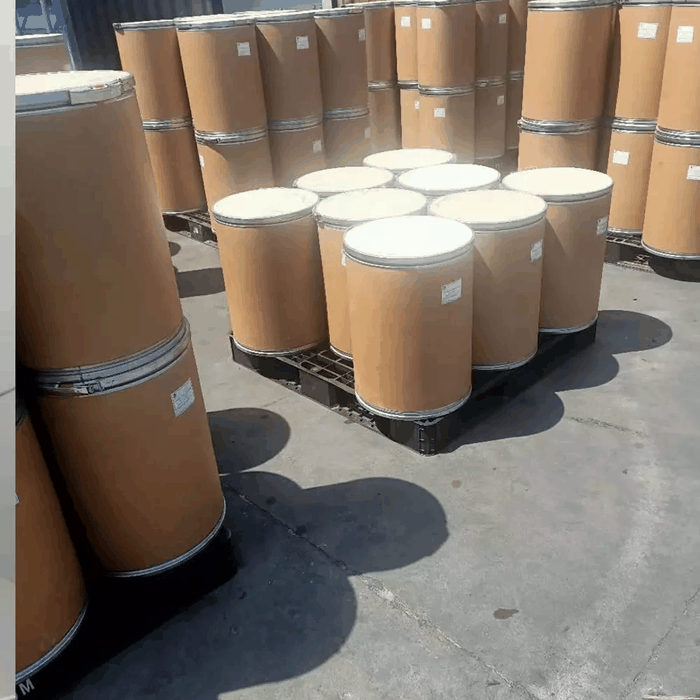 Nonoxynol 99%View Details
Nonoxynol 99%View Details
9016-45-9 / 26027-38-3 -
 Polyethylene Glycol Mono-4-nonylphenyl Ether (n=approx. 2) CAS 26027-38-3View Details
Polyethylene Glycol Mono-4-nonylphenyl Ether (n=approx. 2) CAS 26027-38-3View Details
26027-38-3 -
 Polyethylene Glycol Mono-4-nonylphenyl Ether (n=approx. 18) CAS 26027-38-3View Details
Polyethylene Glycol Mono-4-nonylphenyl Ether (n=approx. 18) CAS 26027-38-3View Details
26027-38-3 -
 Nonoxynol 9 CAS 26027-38-3View Details
Nonoxynol 9 CAS 26027-38-3View Details
26027-38-3 -
 15761-38-3 N-Boc-L-Alanine >98%View Details
15761-38-3 N-Boc-L-Alanine >98%View Details
15761-38-3 -
 6485-34-3 Saccharin Calcium >98%View Details
6485-34-3 Saccharin Calcium >98%View Details
6485-34-3
